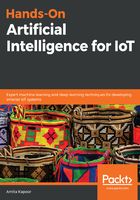
上QQ阅读APP看书,第一时间看更新
JSON files with the pandas module
JSON strings or files can be read with the pandas.read_json() function, which returns a DataFrame or series object. For example, the following code reads the zips.json file:
df = pd.read_json(os.path.join(data_folder,data_file), lines=True)
print(df)
We set lines=True because each line contains a separate object in JSON format. Without this argument being set to True, pandas will raise ValueError. The DataFrame is printed as follows:
_id city loc pop state 0 1001 AGAWAM [-72.622739, 42.070206] 15338 MA 1 1002 CUSHMAN [-72.51565, 42.377017] 36963 MA ... ... ... ... ... ... 29351 99929 WRANGELL [-132.352918, 56.433524] 2573 AK 29352 99950 KETCHIKAN [-133.18479, 55.942471] 422 AK [29353 rows x 5 columns]
To save the pandas DataFrame or series object to a JSON file or string, use the Dataframe.to_json() function.
More information for both of these functions can be found at these links: https://pandas.pydata.org/pandas-docs/stable/generated/pandas.read_json.html and https://pandas.pydata.org/pandas-docs/stable/generated/pandas.DataFrame.to_json.html.
While CSV and JSON remain the most popular data formats for IoT data, due to its large size, it is often necessary to distribute data. There are two popular distributed mechanisms for data storage and access: HDF5 and HDFS. Let's first learn about the HDF5 format.